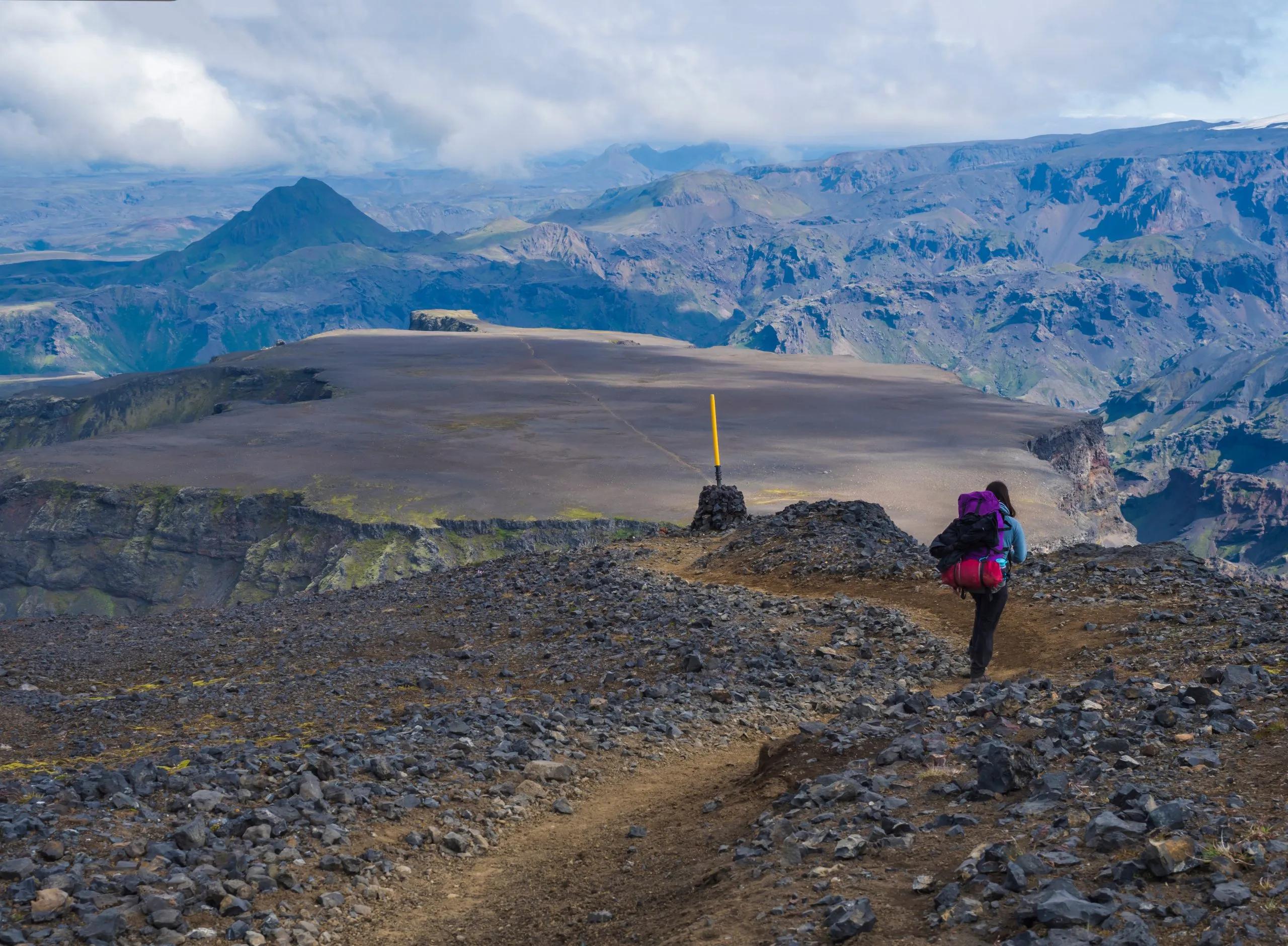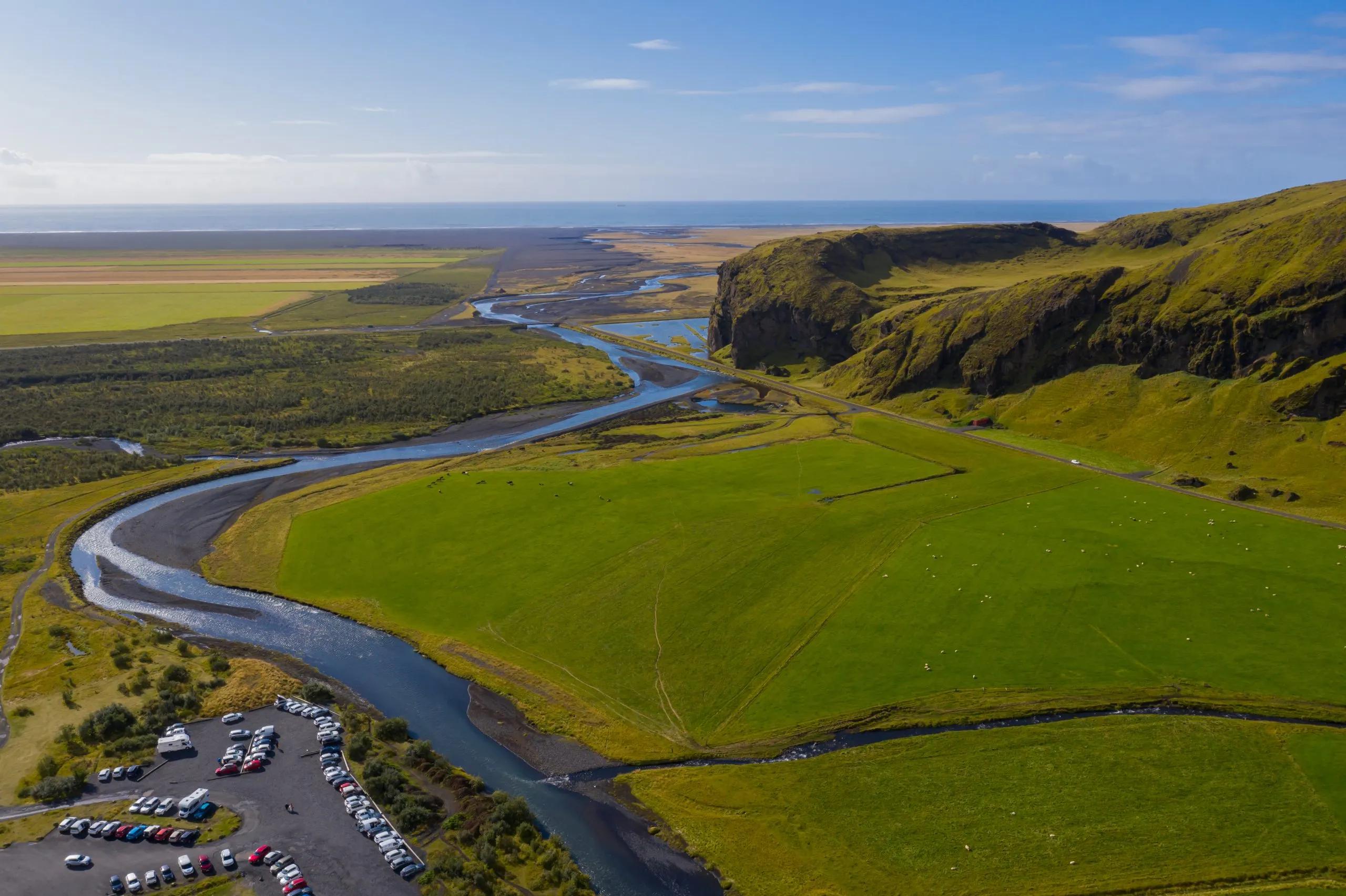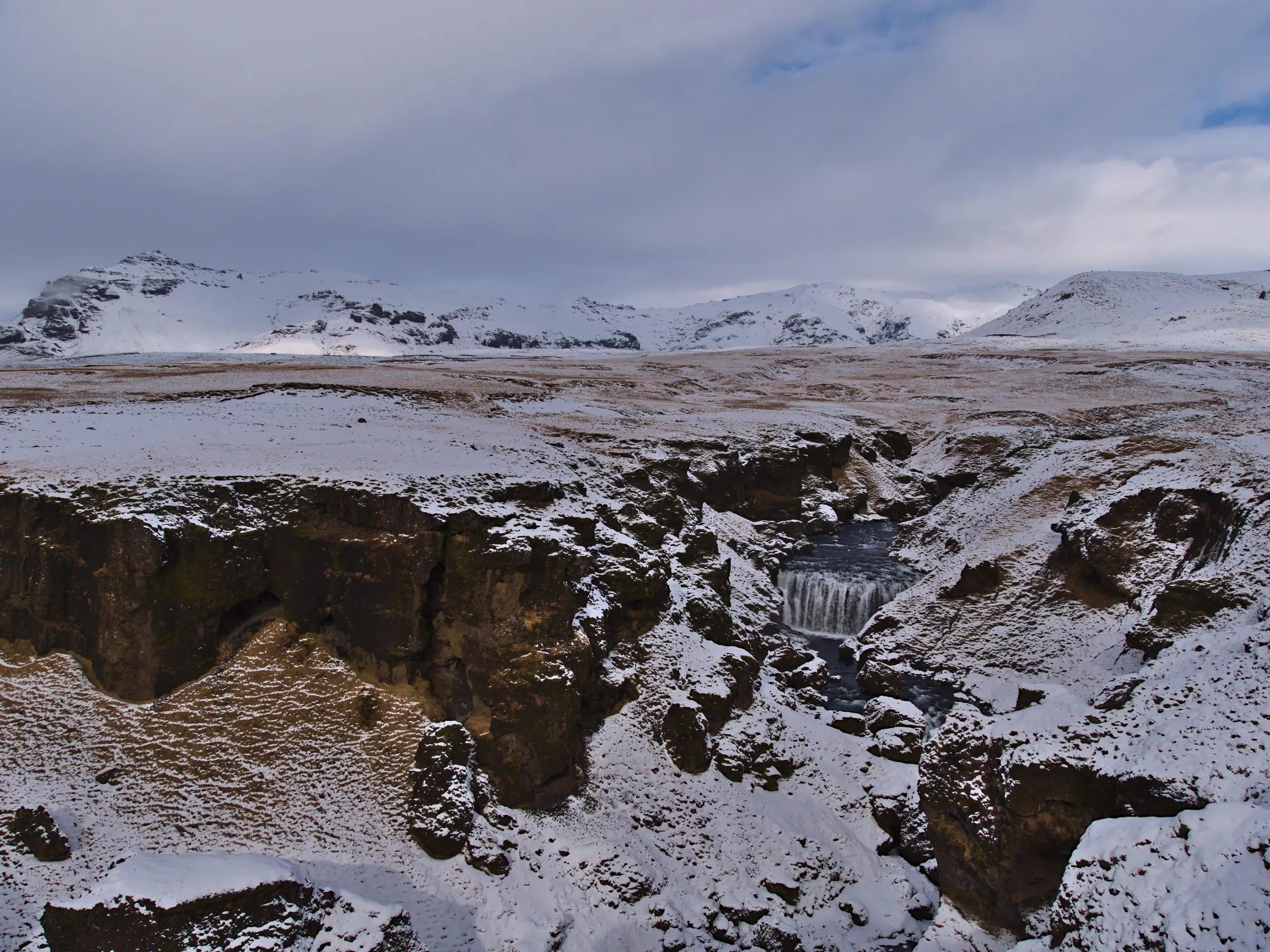13.7 km and 1000 m of elevation gain / 120 m of elevation loss










2-day Fimmvörðuháls Trek
2 days / 1 nights
|
Starting point
Þórsmörk
Finish point
Skógar
Season
From July to September
Technical level
4/5
Fitness level
2/5
Tour type
Hut-to-Hut
Starting point
Þórsmörk
Finish point
Skógar
Season
From July to September
Technical level
4/5
Fitness level
2/5
Tour type
Hut-to-Hut
Highlights
- Ascend from the verdant Thorsmork valley into Iceland’s volcanic heartland
- Experience the dramatic landscape shift from lush forests to stark volcanic fields
- Navigate terrains shaped by recent volcanic activity, witnessing nature’s raw power
- Descend along “The Waterfall Way,” featuring a series of enchanting cascades
- Conclude your trek at the breathtaking Skógafoss, one of Iceland’s iconic waterfalls
Itinerary of the trip
FREE ITINERARY
Get Your Travel Itinerary
Loved the itinerary? Enter your email below, and we'll send a copy straight to your inbox.
What’s included in the price?
Self-guided
NOT INCLUDED
OPTIONAL EXTRAS
What to bring to the tour
- Hiking shoes/boots
- 25 to 45-liter backpack
- Base layer
- Sports T-shirts
- Hiking shorts
- Hiking water-repellent pants
- Waterproof jacket
- Midlayer
- Sports socks and underwear
- Leisurewear for evenings
- Down jacket
- Gloves
- Shade hat/cap
- Warm headwear
- Sunscreen
- Sunglasses
- Headlamp
- Hiking poles
- ID card or passport
- Snacks
- Cash
- Water bottles or hydration pack
- Sleeping liner
- Toiletries
- Toilet paper
- Small first aid kit
The Fimmvörðuháls Trek, spanning two remarkable days, offers a concentrated exploration of Iceland's dynamic landscapes.
Starting in the lush Thorsmork valley, this trek invites you into a world where green forests meet the dramatic effects of volcanic activity. As you ascend, the surroundings transform, revealing the stark beauty of Iceland's volcanic heartland.
The path leads through terrains forged by recent eruptions, providing an up-close experience of Iceland's geological evolution. The descent along "The Waterfall Way" is a journey through a cascade corridor, where each waterfall, culminating with the majestic Skógafoss, tells its own tale of time and nature.
This 2-day hike is ideal for those vacationing in Iceland and looking to immerse in its natural beauty without committing to a week-long trek. Though it can be completed in a single day, we recommend a slower pace with an overnight stay in a hut to fully savor each moment.
Understanding the unique requirements of a brief yet impactful adventure, we provide around-the-clock support to address any concerns or queries you may have during your journey.
To enhance your experience, we take care of all hut bookings, ensuring you have a comfortable place to rest and recharge. Additionally, each trekker receives a carefully prepared digital guidebook alongside a GPS navigation app to guide you through this remarkable landscape.
Join us and witness the dance of fire and ice that shapes the land of the Vikings.
Frequently Asked Questions
Ratings & Reviews

5.0 average rating

We had a lovely hike today with our guide Klemen. He personalized the tour on our needs and interests, so that we saw places we wouldn't without his experience. The hike was a little bit slippery after the rain from the last days and it went a lot upwards, but it was totally worth it! Thanks again :)


We were really glad to have booked a self-guided tour through Hut to Hut. It was a very easy process, the maps, trip notes and the responsiveness of the team was excellent. Highly recommended! We have never done anything like this before and felt safe the whole time!
We had a lovely hike today with our guide Klemen. He personalized the tour on our needs and interests, so that we saw places we wouldn't without his experience. The hike was a little bit slippery after the rain from the last days and it went a lot upwards, but it was totally worth it! Thanks again :)


We were really glad to have booked a self-guided tour through Hut to Hut. It was a very easy process, the maps, trip notes and the responsiveness of the team was excellent. Highly recommended! We have never done anything like this before and felt safe the whole time!
All available guidance options
Self-guided
Are you looking for a good adventure and limitless flexibility? Then you should try out a self-guided tour, perfect for independent explorers who want to set their own pace. Without the need to stick to a group schedule, you’re free to linger at scenic viewpoints while the logistics are taken care of in advance.

HASSLE FREE
We handle itineraries, accommodations, and anything else you prefer not to deal with, so you can enjoy a carefree hike.

BOOK WITH CONFIDENCE
We are a financially protected company, fully bonded and insured, keeping your money safe and allowing you to travel with confidence.

TRIED & TESTED ADVENTURES
Only the best hut to hut hikes in the USA, cherry-picked by our local team with an in-depth knowledge of the region.

UNBEATABLE SUPPORT
Our 24/7 customer support is where we show our passion, bringing you a better experience by making your well-being our number one priority.


















